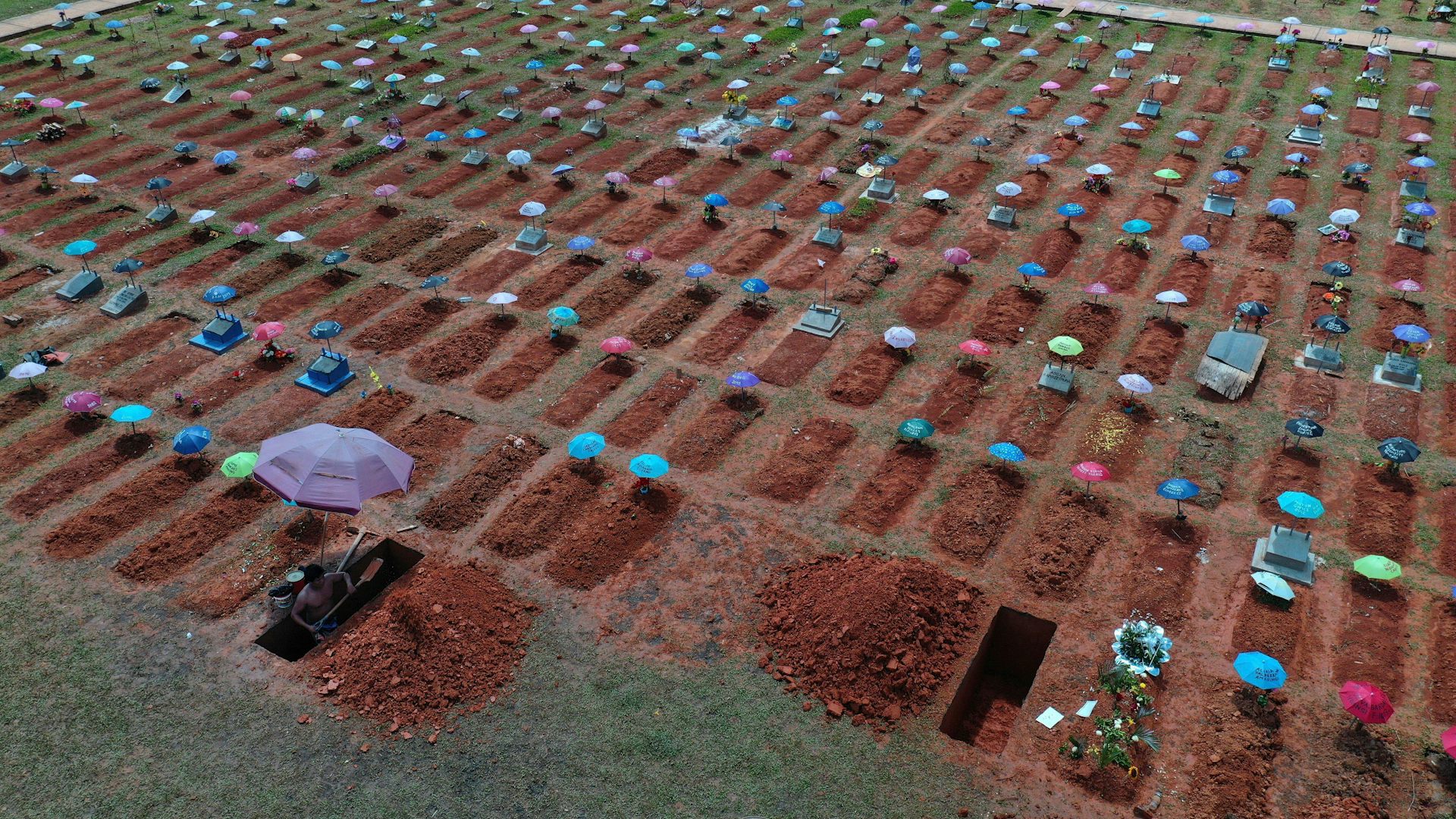Buried alive? The surreal story of how COVID took over a remote city in the Amazon
Published: January 14, 2025 12:22pm EST

A worker digs a grave in the San Juan Bautista cemetery in Iquitos, Peru in March 2021, amid a fresh COVID wave. Behind this location is the mass grave used in 2020. Associated Press/Alamy
Juan Pablo Vaquero was pronounced dead in the Peruvian Amazonian city of Iquitos in the first wave of COVID-19 in April 2020. His sister wasn’t allowed to see his body. Three days later he appeared at her home, after having allegedly awoken in a pile of corpses in the jungle.
Uncle Covid, as Vaquero came to be known, became a local media sensation. His story was dismissed as an urban myth by the political and professional elites of the city. But it struck a chord with an impoverished majority trapped in an unprecedented crisis.
As my new research on the pandemic in Iquitos shows, the first wave hit the city hard. Around 70% of its inhabitants had been infected by July 2020. The region of Loreto – of which Iquitos is the capital – had the highest death rate in Peru, which had the highest death rate in the world.
I had been in Iquitos just before the pandemic, researching the social and environmental challenges of this remote jungle city, the largest in the world unreachable by road.
More:
https://theconversation.com/buried-alive-the-surreal-story-of-how-covid-took-over-a-remote-city-in-the-amazon-244596
